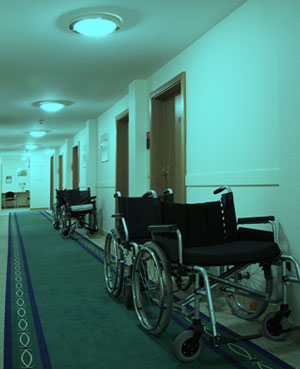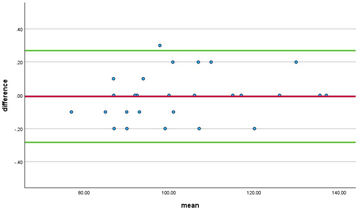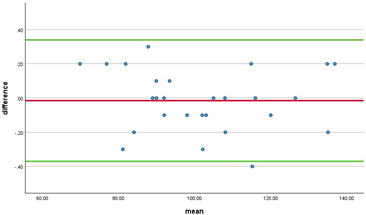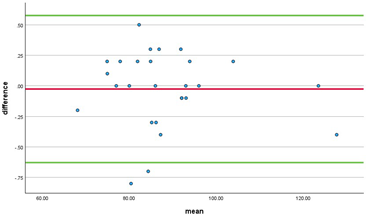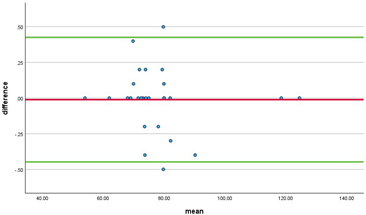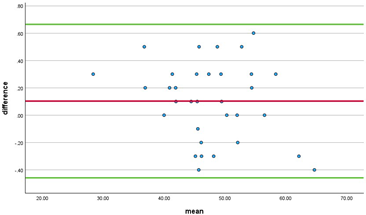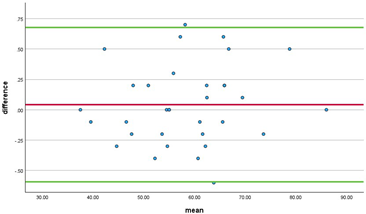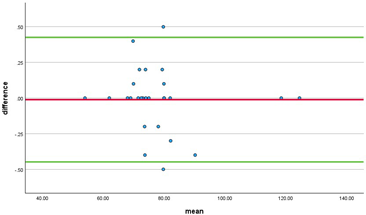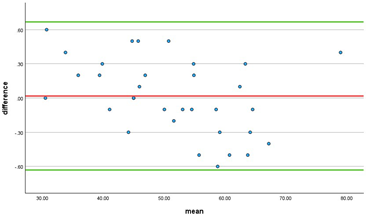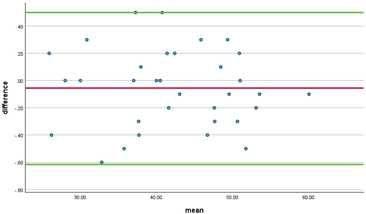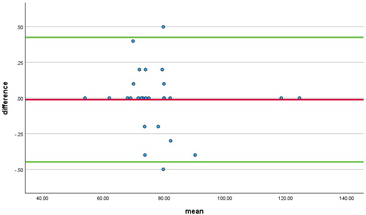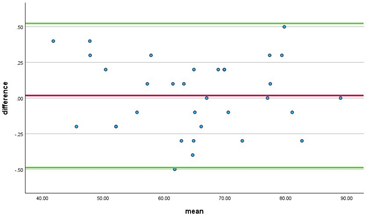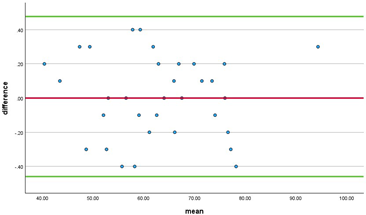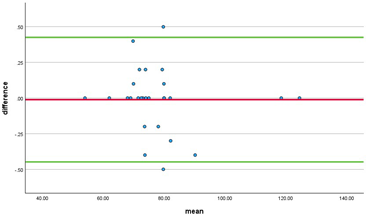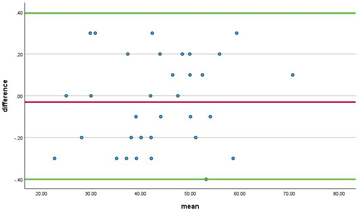Journal of Rehabilitation Practices and Research Volume 6 (2025), Article ID: JRPR-175
https://doi.org/10.33790/jrpr1100175Research Article
Reliability of the Five-Position Bell Curve Test Comparing the BTE Tech PrimusRS to the Jamar Dynamometer
Edwin J. Myers*, Kaelee M. Alvarez, and Veronica Martinez
Department of Occupational Therapy, Florida Gulf Coast University, 10501 FGCU Blvd S. Ft. Myers, FL 33965, United States.
Corresponding Author Details: Edwin J. Myers, OTD, OTR/L, ATP, Associate Professor, Department of Rehabilitation Sciences, Occupational Therapy Program, Florida Gulf Coast University, 10501 FGCU Blvd S. Ft. Myers, FL 33965, United States.
Received date: 22nd May, 2025
Accepted date: 19th June, 2025
Published date: 21st June, 2025
Citation: Myers, E. J., Alvarez, K. M., & Martinez, V., (2025). Reliability of the Five-Position Bell Curve Test Comparing the BTE Tech PrimusRS to the Jamar Dynamometer. J Rehab Pract Res, 6(1):175.
Copyright: ©2025, This is an open-access article distributed under the terms of the Creative Commons Attribution License 4.0, which permits unrestricted use, distribution, and reproduction in any medium, provided the original author and source are credited.
Abstract
Purpose: This study examines the test-retest reliability and concurrent validity of the Five-Position Bell Curve Test using the BTE PrimusRS, comparing its performance to the Jamar dynamometer. Given the critical role of grip strength in occupational health and rehabilitation, ensuring the validity of assessment tools is essential for clinical decision-making and functional evaluations.
Methods: A total of 61 adults with no upper extremity pathology (27 males, 34 females) completed two identical testing sessions involving the Five-Position Bell Curve Test on both devices. Testing followed ASHT grip strength protocols, with randomized instrument order and standardized posture, grip technique, and rest periods. Intraclass correlation coefficients (ICC) and paired t-tests assessed measurement consistency across all five fret positions for both hands.
Results: ICC values were near-identical (≥0.999 - 1.000) across all fret positions, indicating excellent test-retest reliability and concurrent validity between instruments. Only one statistically significant difference was observed (Fret 1, Left Hand: t(33) = 2.073, p = 0.046, d = 0.361), suggesting a minor measurement deviation. Overall, grip strength measurements between BTE PrimusRS and Jamar dynamometer were highly comparable, supporting their interchangeability for clinical assessments.
Conclusion: The BTE PrimusRS demonstrates excellent test-retest reliability and concurrent validity in performing the Five- Position Bell Curve Test, aligning with the measurement validity of the Jamar dynamometer. While results confirm its clinical applicability, future research should explore its reliability in populations with upper extremity injuries and neurological impairments.
Key words (3-5): Grip Strength; Work Simulator; Dynamometer; Sincerity of Effort; Five-Position Bell-Curve Test
Introduction
Upper extremity strength is a significant factor in successful engagement in activities of daily living. Grip strength also serves as a grand determinant of a person’s functional capacity and can help show potential correlations on a patient’s future health status [1]. Tasks are often carried out automatically, including mobility, dressing, cooking, driving, and manipulating items and activities throughout one’s day-to-day routines. It is also known that effective grip strength can also influence one’s mental health due to varying levels of functional participation [2]. Grip strength is also necessary in evaluating tasks that rely on upper limb strength for functionality and environmental navigation, especially during the aging process, such as the strength required to propel a manual wheelchair [3]. Deficits in hand grip strength may affect occupational performance and functional independence, further diminishing one’s quality of life, whether they demonstrate intact health or impairments [4]. Studies indicate that vulnerable populations, such as the elderly, individuals with disabilities, those with clinical depression, or those recovering from an illness or injury display a direct correlation with diminished hand grip strength [5]. The assessment of grip strength requires the use of devices that are correctly calibrated and determined to be accurate and valid. Despite its importance, the literature indicates gaps in developing normative standards for hand-grip strength [6]. Studies are also limited regarding new technologies, such as the Baltimore Therapeutic Equipment (BTE) PrimusRS, which may aid in the evaluation of grip strength [7].
The most utilized normative standards for grip strength were established in 1985 using the Jamar dynamometer [8]. Limitations of this study include inconsistency in measuring hand strength, reliance on non-randomized volunteers, and threats to external validity and generalizability due to the population tested [8,9]. To better reflect the contemporary world, updated studies are required to facilitate current normative standards and improve accuracy in measuring, evaluating, and comparing data on hand strength [10]. This evolving societal shift challenges standard norms and tools but also creates advancements to further establish a platform for handgrip research with new technologies such as the BTE Primus RS. The PrimusRS, utilized in clinical arenas to address endurance and strength, has a grip strength protocol that has not been assessed for reliability compared with the gold standard [7]. The Five-Position Bell Curve Test is a grip strength assessment protocol that measures strength across five different handle positions (frets) on a dynamometer. The test is beneficial in determining the sincerity of effort of clients with a known injury or pathology by sampling grip strength in five different positions over a short amount of time [11]. This test also evaluates grip strength at varying handle widths, typically creating a bell-shaped distribution curve where middle positions (frets 2-4) generally produce higher grip strength values than extreme positions (frets 1 and 5). The test is valuable for assessing effort consistency and detecting potential submaximal effort patterns in clinical and occupational settings [12].
Previous research has examined the reliability of the Five-Position Bell Curve Test within single instruments, but limited studies have compared its reliability across different measurement devices. Shechtman & Gutierrez [12] evaluated various interpretation methods for the Five-Position Bell Curve Test using the same instrument, but their focus was on analytical approaches rather than inter-instrument reliability. The current study differs by specifically examining the agreement between two distinct instruments (BTE PrimusRS and Jamar dynamometer) when performing the Five-Position Bell Curve Test, addressing inter-instrument reliability between two different devices. This is a gap in the literature regarding inter-instrument reliability for this assessment protocol.
The purpose of this study is to determine the test-retest reliability and concurrent validity of the Five-Position Bell Curve Test of the PrimusRS compared with the Jamar handgrip dynamometer. The Jamar dynamometer is considered the industry gold standard, having been validated with numerous studies demonstrating excellent test-retest reliability [5,13]. The results of this study may assist practitioners in determining whether the PrimusRS is an accurate instrument for establishing baseline grip measures for clients with upper extremity pathologies. A null hypothesis was generated: there is no difference in the measurements taken using the American Society of Hand Therapists for the Five Position Bell Curve Test on the BTE PrimusRS and the Jamar dynamometer. This study may elaborate on whether the PrimusRS may serve as a reliable proxy to the Jamar Dynamometer for the Five Position Bell Curve Test.
Materials and Methods
Instrumentation
Jamar Dynamometer
The Jamar dynamometer is considered the gold standard for measure of grip strength measurement and is recommended by the American Society of Hand Surgeons and American Society of Hand Therapists [14] (Fig. 1). The device offers a precise multifunctional tool approach to grip assessments, including the Five-Position Bell Curve Test which measures grip strength across five fret positions. The Jamar dynamometer has been studied for its testretest reliability and across multiple publications and consistently shows excellent validity and reliability [15]. For this study, a single Jamar dynamometer was professionally calibrated according to the manufacturer’s protocol and was used to obtain all measurements.
BTE PrimusRS
The BTE PrimusRS can be utilized to objectively evaluate various physiological patterns of movement or job simulation tasks in isometric, isokinetic, and isotonic modes. The PrimusRS can replicate functional tasks such as turning a doorknob or using a power tool. Static and dynamic grip strength measurements are assessed utilizing the attachment #162, with progression through five frets, paralleling the Jamar dynamometer. The BTE PrimusRS is considered a reliable and valid source to measure grip strength, comparable to the Jamar dynamometer, though both tools are not considered to be identical [12,16]. Participants’ static hand grip strength was measured with attachment #162 and was recorded within the BTE PrimusRS software (Fig. 2 & 3 respectively). The BTE PrimusRS was calibrated according to the manufacturer's recommendations before each session.
Protocol/Design
Participants
The participant population consisted of thirty-four females (mean age, 25.11 ± 6.1 years) and twenty-seven males (mean age; 26 ± 3.7 years) aged 21–50 years. All participants were assessed for exclusionary criteria, including a history of impaired cognitive functioning, upper extremity injury or pathology, and pregnancy at the time of the study. Self-reported preferred handedness identified that most participants (85%) preferred right-hand, (13%) preferred lefthand, and (2%) identified as ambidextrous. To control environmental consistency, grip strength measurements were taken per standard guidelines and at a single standardized location for all participants. All participants were able to complete the protocol as designed.
Each participant completed two identical data collection sessions, including the Five-Position Bell Curve Test on both the BTE PrimusRS and the Jamar dynamometer for each hand. Participants were randomly assigned to begin testing with either the BTE PrimusRS or the Jamar dynamometer, with the order reversed in the subsequent session to control sequencing effects.
Testing Procedures
All testing procedures adhered to the ASHT grip strength protocol to ensure standardized positioning. Participants were seated in an upright position, with both feet flat on the floor and hips and knees flexed to 90°. Participants were instructed to sit without leaning against the chair and maintain their elbow at their side, flexed at a 90° angle. Testing began with the participant using their selfreported preferred hand. The Five-Position Bell Curve Test protocol involves measuring grip strength at five different handle positions (frets) on each device, progressing sequentially from the narrowest to the widest grip span. Each participant performed one maximal grip contraction at each fret position, with the test administered in an alternating hand pattern (preferred hand first, then non-preferred hand) before progressing to the next fret position. Participants were instructed to exert maximal grip strength while progressing through all five fret positions. Participants discontinued testing per suggestions if discomfort occurred. In accordance with BTE protocol, participants were positioned out of view of the BTE PrimusRS screen and received no coaching during data collection to eliminate potential bias in performance. A 15-second rest period was enforced between trials within each test, followed by a 30-minute rest period before transitioning to the second device to allow for adequate metabolic recovery.
The Five-Position Bell Curve Test was administered using alternating hand progression. Participants first completed one measurement on their preferred hand, then repeated the process with the non-preferred hand before progressing to the next fret. Peak grip force was recorded automatically by the peak-hold needle, marking the highest force exerted (in kilograms) on the dial.
To ensure procedural consistency, efforts were made to closely align BTE testing with the Jamar dynamometer protocol. While manufacturer guidelines for the BTE PrimusRS do not specify whether testing should be conducted in a seated or standing position, participants remained seated to maintain methodological consistency across both devices. Notably, the BTE PrimusRS #162 tool is fixed to the main apparatus, restricting freedom of movement compared with the Jamar dynamometer, which allows for greater range of motion.
Data Collection & Session Structure
Each participant performed 10 grip contractions per hand (five per device). A minimum 24-hour recovery period was required between trials. Before the second session, participants underwent a brief health screening to confirm no new upper extremity injuries or pathology. Data collection followed a consistent order, mirroring the initial session. Jamar dynamometer data was recorded immediately by the researcher into the master Excel sheet. BTE PrimusRS data was stored within the machine’s software and later transcribed into the master Excel sheet by a research team member.
Statistical Analysis
Intraclass correlation coefficient (ICC) is a measure of descriptive statistics applied to assess consistency between different instruments, in this case, the Jamar dynamometer and PrimusRS [17]. It assesses clusters of a single class of data to identify how strongly the data between two variables correlate. Intraclass correlation coefficient was implemented to determine the reliability of grip strength measures. Results with values greater than .9 indicate excellent reliability, and values greater than .8 indicate good reliability.
The Bland-Altman analysis is a statistic used to analyze the agreement between two quantitative measurements, which include data sets, instruments or raters. The means, or averages, of the agreements are then plotted as percentages or ratios in a graphical presentation [18,19]. For supportive data in this study, a Bland-Altman plotting with 95% limits of agreement (95% LoA) was utilized for visual demonstration of consistency between the two devices. This is a significant assessment to employ within the study to note the differences between devices, including measurements and a visual relationship between variables.
Results
This study examined the test-retest reliability and concurrent validity of the BTE PrimusRS in comparison to the Jamar dynamometer across a sample of male (N=27) and female (N=34) participants. The data collection focused on grip strength measurements across five fret positions for both the left and right hands, evaluating agreement between the two devices.
Overall, the results indicate a high degree of consistency between the BTE PrimusRS and the Jamar dynamometer, as evidenced by the near-identical intraclass correlation coefficients (ICC ≥ 0.999 - 1.000) across all fret positions (Table 1). This suggests excellent agreement between the instruments in measuring grip strength.
To further illustrate the agreement between the BTE PrimusRS and Jamar dynamometer, 20 Bland-Altman plots were generated (Figures 1-20), providing a visual representation of measurement consistency across all five fret positions. In these plots, the red line represents the mean difference between the two instruments, while the green lines indicate the 95% limits of agreement. The plots demonstrate strong agreement between the two devices, confirming that differences in grip strength measurements were minimal and did not display systematic bias. Consistent with the intraclass correlation coefficient (ICC) results, the plots reveal a high level of reliability, with most data points falling within the 95% limits of agreement. No significant trends in variability were observed, reinforcing the validity of using the BTE PrimusRS as an interchangeable tool for grip strength assessment.
Among female participants, the largest mean difference between devices was observed at Fret 1 of the left hand, yielding a statistically significant difference (t(33) = 2.073, p = 0.046), with a small-tomoderate effect size (Cohen’s d = 0.361). This suggests a slight discrepancy in measurements at this fret position, though differences in other positions were not statistically significant (p > 0.05).
In contrast, male participants did not exhibit statistically significant differences across any fret positions (p > 0.05), reinforcing the consistent agreement between the two devices for grip strength evaluation. Across all groups, small mean differences in force output were observed, ranging from 0.004 to 0.333 kg, reflecting minimal variation between the two instruments.
Additionally, efforts to maintain procedural consistency ensured comparability between devices, despite inherent differences in design, such as the fixed attachment of the BTE PrimusRS #162 tool, which limits movement compared with the Jamar dynamometer. The decision to standardize testing posture across both devices helped mitigate potential variations in measurement outcomes.
These findings provide support for the test-retest reliability and concurrent validity of the BTE PrimusRS in grip strength assessment, confirming its validity as an alternative instrument to the Jamar dynamometer. With near-identical ICC values, minimal effect sizes, and only one significant difference among female participants, this study reinforces the utility of the BTE PrimusRS in clinical and research settings for grip strength evaluation.
Discussion
This study aimed to determine the test-retest reliability and concurrent validity of the Five-Position Bell Curve Test using the BTE PrimusRS as compared to the Jamar dynamometer, the gold standard for grip strength assessment. The findings of this study hold clinical significance, particularly in evaluating an injured client's functional capacity and effort consistency in rehabilitation and return-to-work scenarios. The Five-Position Bell Curve Test has been identified as a valuable protocol in assessing effort consistency and detecting submaximal effort patterns, which can have substantial financial implications for employers, insurance providers, and vocational rehabilitation programs. Ensuring valid and reliable measurement tools for grip strength assessments allows clinicians to accurately determine disability levels and establish appropriate vocational rehabilitation pathways.
The study results suggest that the BTE PrimusRS exhibits excellent test-retest reliability and concurrent validity, producing consistent grip strength measurements comparable to the Jamar dynamometer. Given the near identical ICC values (≥0.999 - 1.000) across most fret positions, the BTE PrimusRS Five-Position Bell Curve Test aligns well with clinical and research expectations for grip strength evaluation. Notably, Fret 1 exhibited the lowest reliability for both hands, while Frets 3 and 4 demonstrated the strongest reliability across all participants. These findings reinforce the bellshaped distribution pattern traditionally observed in grip strength assessments, supporting the validity of the Five-Position Bell Curve Test on the BTE PrimusRS as a robust alternative assessment tool.
A key concern during this study was the lack of freedom of movement in the BTE PrimusRS #162 tool, which remains attached to the main apparatus, unlike the Jamar dynamometer, which allows for greater range of motion. Despite this limitation, results indicate that this factor does not negatively impact measurement accuracy, confirming that the #162 tool is a reliable instrument for conducting the Five-Position Bell Curve Test. The ICC analysis was prioritized as the strongest statistical approach for evaluating measurement consistency between instruments. This method assesses both association strength and data similarity, reinforcing the comparability of the BTE PrimusRS and the Jamar dynamometer for grip strength assessment.
While both devices demonstrated excellent test-retest reliability, it is recommended that pre- and post-test evaluations maintain instrument consistency, avoiding interchange between the BTE PrimusRS and the Jamar dynamometer to ensure standardized assessment procedures. Maintaining consistency across test sessions helps mitigate variability in grip strength results and supports accurate clinical decision-making.
An evaluation instrument should provide clinical value by improving efficiency and cost effectiveness. While the Jamar dynamometer is more cost-effective, the BTE PrimusRS offers built-in data storage and retrieval functions, streamlining workflow efficiency for clinicians. The automated calculations of mean, standard deviation, and coefficient of variation on the BTE PrimusRS further enhance its usability for assessing consistency of effort, an essential factor in work rehabilitation and injury evaluations. Given the strong ICC values demonstrating near identical correlation, clinicians can be confident that either device will yield reliable and valid results for grip strength assessment. The findings further support the integration of the BTE PrimusRS in rehabilitation settings, particularly when electronic data tracking and efficiency are prioritized.
Limitations
Limitations section in total was condensed
Recruitment retention was a primary concern, with a 7.5% attrition rate largely due to conflicting schedules that prevented some participants from returning for follow-up sessions. The recovery periods between grip measurements (15 seconds) and between device tests (30 minutes) may have influenced participant adherence, with some participants reporting that rest periods were either too long or too short. Additionally, the fixed attachment of the BTE PrimusRS #162 tool restricts natural grip adjustments compared with the freely movable Jamar dynamometer, and the study was conducted in a controlled laboratory environment, which may limit direct applicability to real-world rehabilitation settings.
Conclusions
Grip strength is a key determinant of occupational health, emphasizing the essentiality for therapists to utilize valid and reliable assessment tools in clinical practice. As normative standards have evolved over the past decades, understanding the shifts is crucial for effective intervention planning and clinical decision-making. This study addressed the limited research on the general population using the BTE PrimusRS, alongside previously noted validity concerns. The findings demonstrate excellent test-retest reliability and concurrent validity, confirming the comparability of the BTE PrimusRS and Jamar dynamometer in grip strength assessment. Future research should focus on validating the reliability of the BTE PrimusRS Five-Position Bell Curve Test in populations with known injuries or neurological dysfunctions, ensuring its applicability in broader clinical and rehabilitation settings.
Competing Interests:
The authors declare they have no competing interests.
References
Vaishya, R., Misra, A., Vaish, A., Ursino, N., & D’Ambrosi, R. (2024). Hand grip strength as a proposed new vital sign of health: A narrative review of evidence. Journal of Health, Population, and Nutrition, 43(1), 7. View
Zhao, Z., Ji, C., Liu, Y., Gao, S., & Xia, Y. (2020). Higher handgrip strength predicts a lower risk of depressive symptoms in rural Chinese populations. Journal of Affective Disorders, 269 View
Halaweh, H. (2020). Correlation between health-related quality of life and hand grip strength among older adults. Experimental Aging Research, 46(2), 178–191. View
Bobos, P., Nazari, G., Lu, Z., & MacDermid, J. C. (2019). Measurement properties of the hand grip strength assessment: A systematic review with meta-analysis. Archives of Physical Medicine and Rehabilitation, 101(3), 553–565. View
Bohannon, R. W. (2019). Grip strength: An indispensable biomarker for older adults. Clinical Interventions in Aging, 14, 1681–1691. View
Fain, E., & Weatherford, C. (2016). Comparative study of millennials’ (age 20–34 years) grip and lateral pinch with the norms. Journal of Hand Therapy, 29(4), 483–488. View
Myers, E., & Triscari, R. (2017). Comparison of the strength endurance parameters for the Baltimore Therapeutic Equipment (BTE) Simulator II and the Jamar Handgrip Dynamometer. Work, 57(1), 95–103. View
Mathiowetz, V., Kashman, N., Weber, K., Dowe, M., & Rogers, S. (1985). Grip and pinch strength: Normative data for adults. Archives of Physical Medicine and Rehabilitation, 66(2), 69–74. View
Larson, C. C., & Ye, Z. (2017). Development of an updated normative data table for hand grip and pinch strength: A pilot study. Computers in Biology and Medicine, 86, 40–46. View
Roush, J. R., Gombold, K. L., & Bay, R. C. (2018). Normative grip strength values in males and females, ages 50 to 89 years old. Internet Journal of Allied Health Sciences and Practice, 16(1), Article 7. View
Phillips, H. J., Biland, J., Costa, R., & Souverain, R. (2011). Five-position grip strength measures in individuals with clinical depression. Journal of Orthopedic & Sports Physical Therapy, 41(3), 149–154. View
Shechtman, O., Davenport, R., Malcolm, M., & Nabavi, D. (2003). Reliability and validity of the BTE-Primus grip tool. Journal of Hand Therapy, 16(1), 36–42. View
Roberts, et al. (2011). The Prevalence and Impact of Scoliosis in Pompe Disease: Lessons Learned from the Pompe Registry. Molecular Genetics and Metabolism, 104, 574-582. View
Cooper, D.R. and Schindler, P.S. (2014). Business Research Methods. 12th Edition, McGraw Hill International Edition, New York. View
Lupton-Smith, A., Fourie, K., Mazinyo, A., Mokone, M., Nxaba, S., & Morrow, B. (2022). Measurement of hand grip strength: A cross-sectional study of two dynamometry devices. South African Journal of Physiotherapy, 78(1), 1768. View
Gutierrez, Z., & Shechtman, O. (2003). Effectiveness of the fivehandle position grip strength test in detecting sincerity of effort in men and women. American Journal of Physical Medicine & Rehabilitation, 82(11), 847–855. View
Koo, T. K., & Li, M. Y. (2016). A guideline of selecting and reporting intraclass correlation coefficients for reliability research. Journal of Chiropractic Medicine, 15(2), 155–163. View
Giavarina, D. (2015). Understanding Bland-Altman analysis. Biochemia Medica, 25(2), 141– 151. View
Gerke, O. (2020). Reporting standards for a Bland– Altman Agreement Analysis: A review of methodological reviews. Diagnostics, 10(5), 334. View

